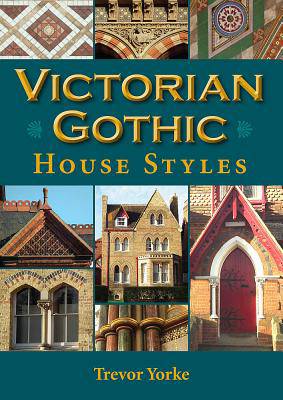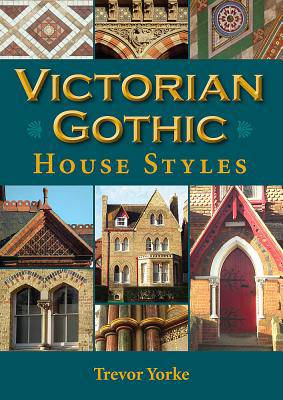
Je cadeautjes zeker op tijd in huis hebben voor de feestdagen? Kom langs in onze winkels en vind het perfecte geschenk!
- Afhalen na 1 uur in een winkel met voorraad
- Gratis thuislevering in België vanaf € 30
- Ruim aanbod met 7 miljoen producten
Je cadeautjes zeker op tijd in huis hebben voor de feestdagen? Kom langs in onze winkels en vind het perfecte geschenk!
- Afhalen na 1 uur in een winkel met voorraad
- Gratis thuislevering in België vanaf € 30
- Ruim aanbod met 7 miljoen producten
Zoeken
€ 11,95
+ 23 punten
Omschrijving
The Gothic revival began in the early years of Victoria's reign. It quickly became the dominant form of building. New and exciting, it reflected Britain's growing stature and a confidence in the country's past and her future direction. The Gothic style was striking and distinctive, with pointed arches, tall towers, steep roofs, and colorful patterns of tile and brick on the exterior. Interiors featured staircases of rich wood, colored marble columns and painted ceilings. In recent years its romance and flamboyance has found renewed favor with the public. Major examples such as the Midland Hotel, St Pancras; the Albert Memorial; town halls in cities such as Liverpool, Manchester and Bradford, are all well known. Recent treasures of discovery include Tyntesfield, the National Trusts country house in Somerset. But there are numerous, more subdued yet equally attractive examples of modest middle class housing. They stand in towns up and down the country and are steadily being returned to their former glory by new, proud owners. Trevor Yorke describes the importance of this period of architecture and shares the joy of its exuberance. His book will be welcomed by everyone with an interest in the Victorian Age and especially by those living in and restoring.
Specificaties
Betrokkenen
- Auteur(s):
- Uitgeverij:
Inhoud
- Aantal bladzijden:
- 80
- Taal:
- Engels
- Reeks:
Eigenschappen
- Productcode (EAN):
- 9781846743047
- Verschijningsdatum:
- 15/12/2012
- Uitvoering:
- Paperback
- Formaat:
- Trade paperback (VS)
- Afmetingen:
- 147 mm x 206 mm
- Gewicht:
- 181 g

Alleen bij Standaard Boekhandel
+ 23 punten op je klantenkaart van Standaard Boekhandel
Beoordelingen
We publiceren alleen reviews die voldoen aan de voorwaarden voor reviews. Bekijk onze voorwaarden voor reviews.









